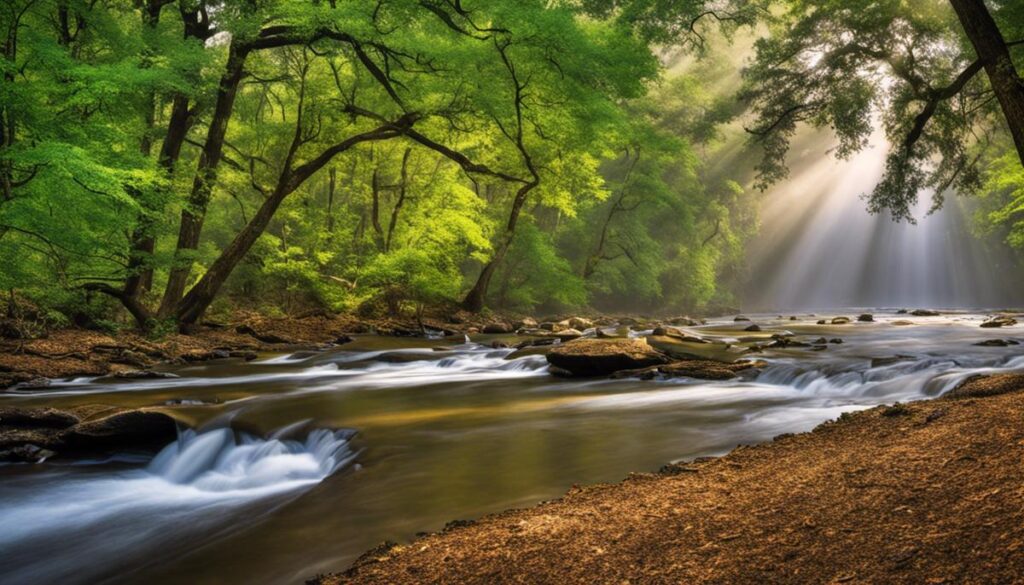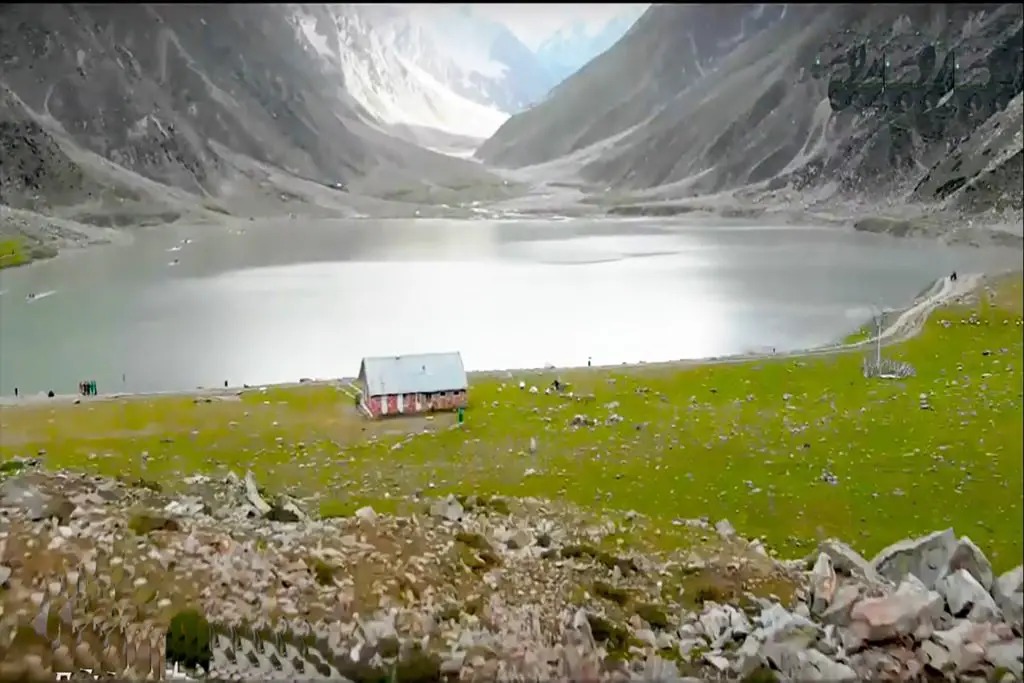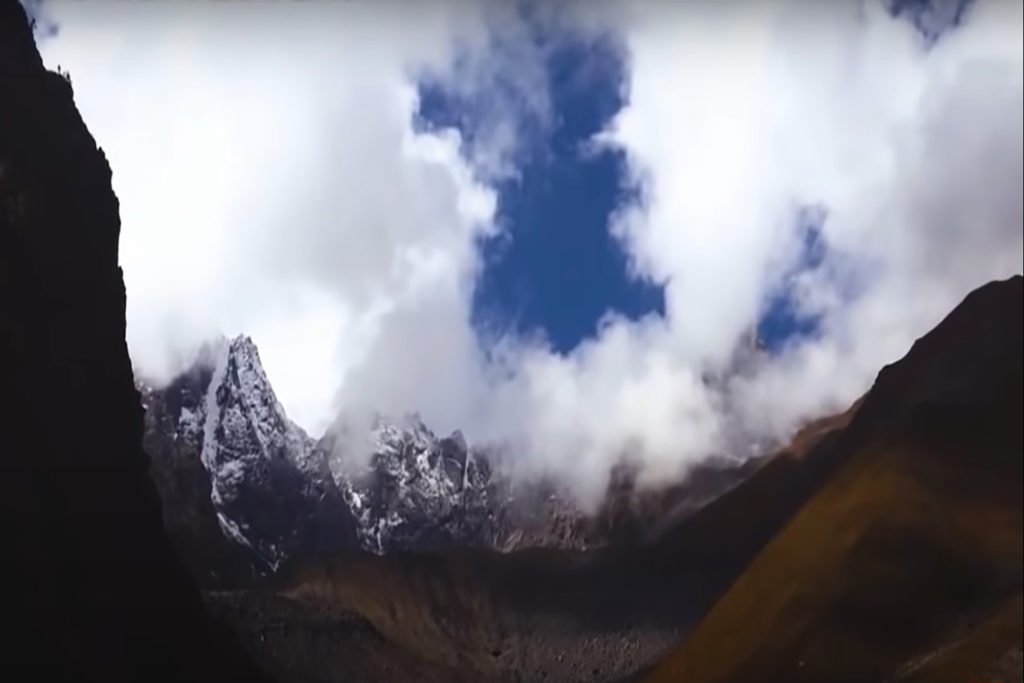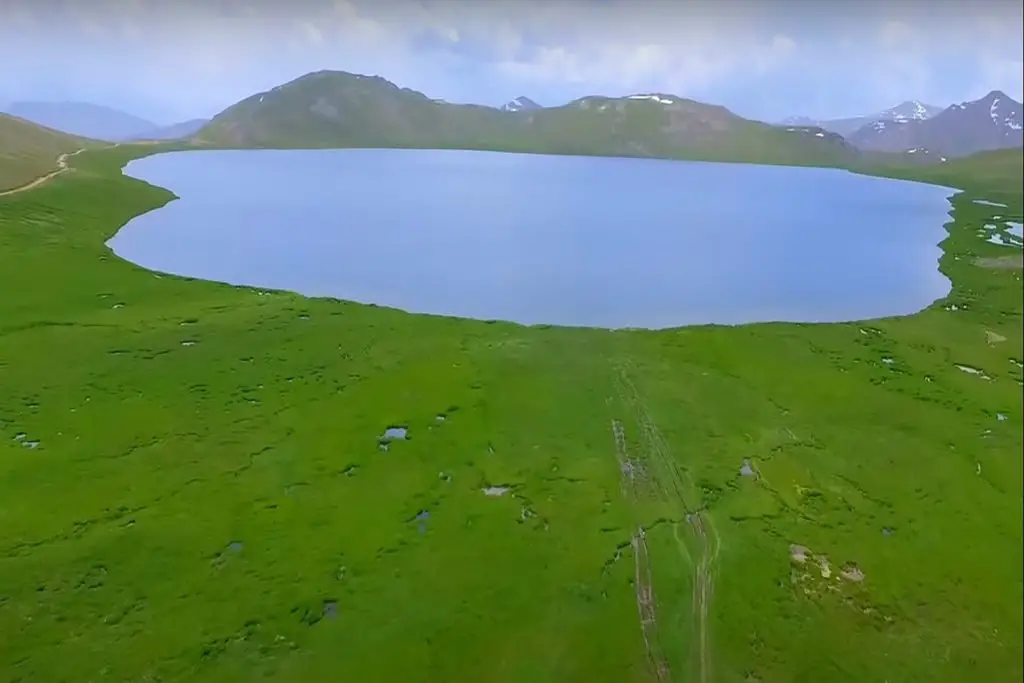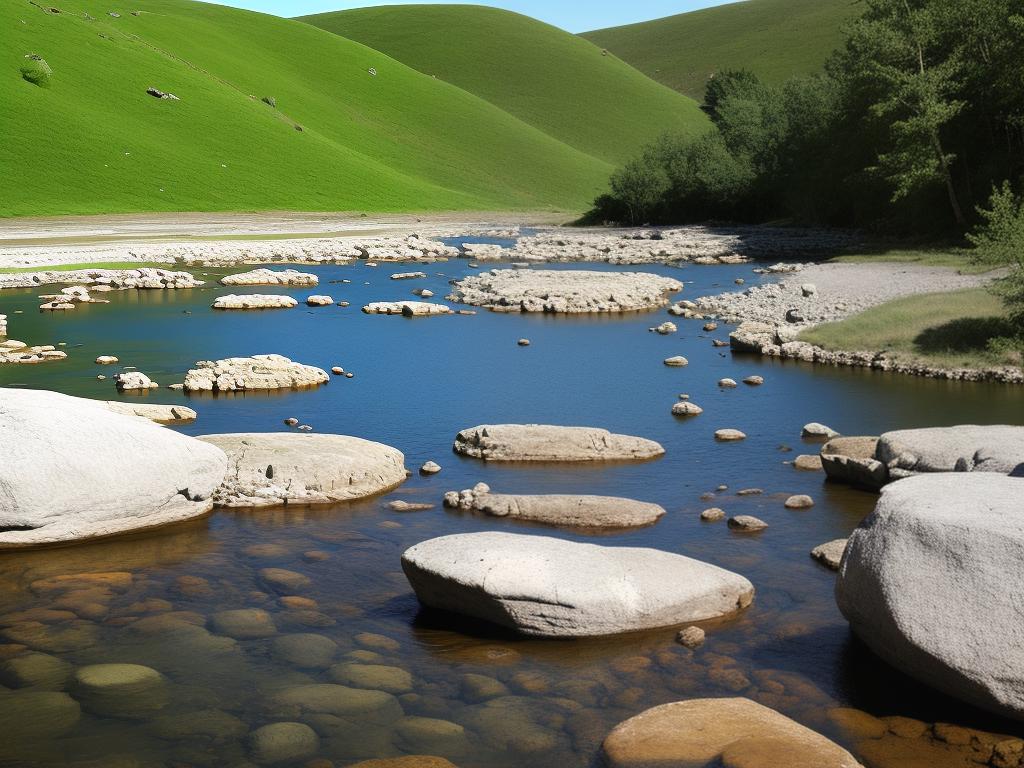The Tallahatchie River, a magnificent waterway in the United States, boasts a geological heritage, historical relevance, economic significance, and ecological importance that make it a remarkable feature of the American landscape. The river, known for its winding course, natural beauty, and diverse plant and animal life, has been an intrinsic part of the local communities’ lives for numerous generations. Understanding this river means diving into its geographic characteristics, unraveling its historical significance, appreciating its contribution to local economies, and recognizing the ecological balance it maintains and nourishes.
Geographical Overview of the Tallahatchie River
Geographical Overview of the Tallahatchie River
The Tallahatchie River is a significant water body originating in North Central Mississippi. Ranked as one of the longest rivers within the region, the river spans approximately 230 miles. Like many watercourses, its length can vary with seasonal environmental changes. The Tallahatchie’s river source, the Tippah Hills, is a region located in the northeast corner of Mississippi known for its hilly terrain.
As the river flows, it courses through several counties of Mississippi including Tippah, Union, Benton, Marshall, Lafayette, Panola, Yalobusha, Tallahatchie, Quitman, Sunflower, and Leflore. The river reaches its confluence with the Yalobusha River in Greenwood to form the Yazoo River that further drains into the Mississippi River.
Ecosystems Along the Tallahatchie River
The Tallahatchie River and its tributaries support diverse and unique ecosystems. The region features a range of landscapes, from hilly regions of Tippah Hills to low lying delta regions in the south. This mix of habitats results in a rich biodiversity, making it home to a myriad of wildlife species. The river is inhabited by a vast number of fish species such as catfish, crappie, and largemouth bass, serving as a hub for fishing activities. It is also a crucial breeding ground and water source for many bird species, amphibians, and mammals.
The riverine forests alongside the river are thick with water-tolerant hardwood trees such as cypress, willow, and oak. The riverbanks are also teeming with lush flora that provide a sanctuary for diverse wildlife while acting as a buffer to prevent soil erosion.
Exploring the Tributaries of the Tallahatchie River
Flowing through Mississippi’s heart is the Tallahatchie River, a waterway enriched by its myriad of tributaries, including the Little Tallahatchie River, the Tippah River, and the Yocona River. Besides enhancing the river’s water network, these tributaries serve paramount roles in nutrient and sediment transfer, fostering a vibrant and diverse ecosystem that provides habitats to numerous species.
Notably, the Little Tallahatchie River, which stretches across Tippah and Union counties, feeds into the main Tallahatchie River, broadening its width and depth. Similarly, the invaluable contribution of the Yocona River intensifies the water flow and depth of the main river, which in turn nurtures the river’s biological community.
The intertwining of these tributaries with the main river results in an ecological blend of landscape and biodiversity, creating a uniquely diverse tapestry that is representative of North Central Mississippi.
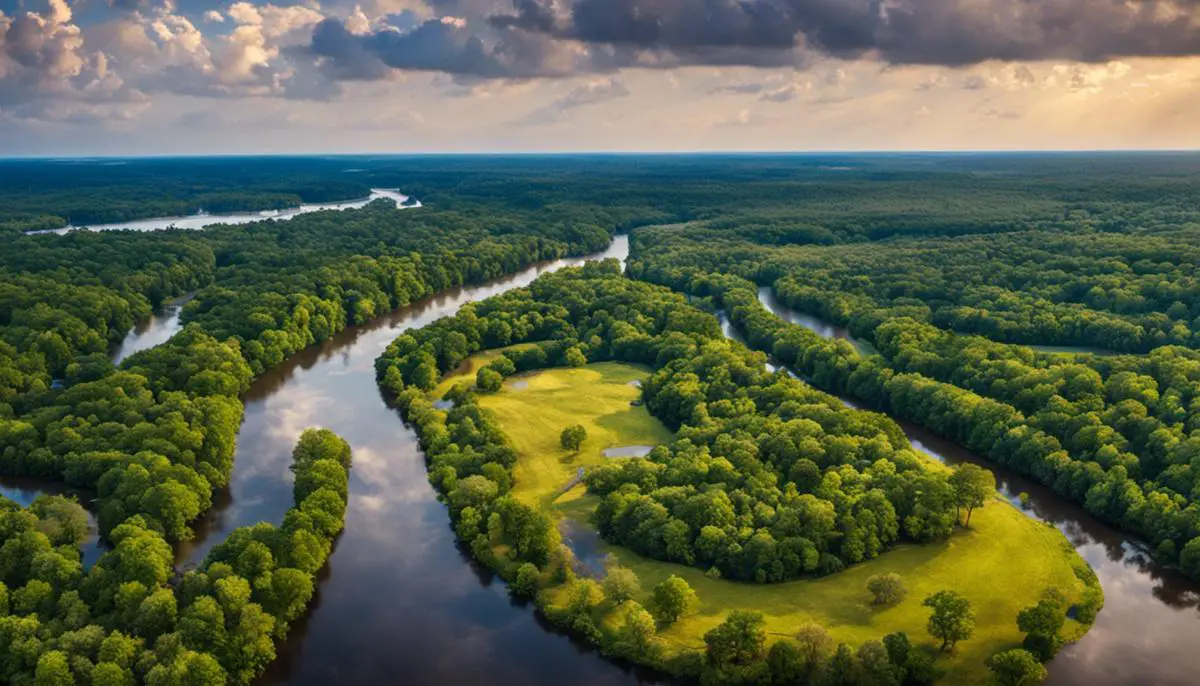
Historical Significance of the Tallahatchie River
Unlocking the Historical Narrative of the Tallahatchie River
From Tippah County and emptying into Leflore County in Mississippi, the Tallahatchie River weaves itself into the region’s historical narrative, impacting human civilizations and shaping social structures it passes through.
Initially, the river region was home to the Choctaw and Chickasaw tribes. Before the advent of white settlers, these tribal societies relied on the river for navigation, sustenance, and even ceremonial activities, making the river a focal point of their existence. The river’s pathways served as conduits for trade and hunting expeditions.
As the 19th century dawned and European settlers landed on the American shores, the Tallahatchie River played an integral role in steering their settlement patterns. Aside from providing fertile soil along its banks for agriculture, the waterway served as a conduit for the transportation of cotton and other crops. The resulting economic prosperity led to the establishment of plantations and the emergence of towns and cities along the river, a pattern that continues to influence Mississippi’s urban layout to this day.
Civil War Era and the Tallahatchie River
The tall and sandy banks of the Tallahatchie River bear silent testimonials of the American Civil War. During this period, the Tallahatchie River acted as a natural barrier and a strategic point in the war efforts. Confederate troops often sought refuge on its banks, using the river as a defensive line against Union Army advances, particularly during the Vicksburg Campaign.
Numerous skirmishes took place around the river, most notably the Battle of Tallahatchie River in 1862. During this battle, Union General James B. McPherson aimed to engage and defeat Confederate troops in the area but the Confederate soldiers retreated before a major clash could occur. Nevertheless, the positioning and movements along the Tallahatchie River helped shape the tactics and strategies of both sides in the larger theatre of war.
The Post-Civil War Influence and Modern Relevance of the Tallahatchie River
The American Civil War, often seen as an emblem of major upheavals, left a lasting impact on various topographical elements, including the Tallahatchie River. The river didn’t merely serve as a strategic hotspot during the war, but it also fostered significant post-war developments. Key among these were the formation of a booming lumber industry due to the vast forests in proximity to the river and the establishment of emergent settlements. Optimizing the river for commercial use catalyzed economic growth during the late 19th and early 20th centuries, a testament to the strategic importance of steamboat navigation during the period.
The historical narrative of the Tallahatchie River, however, also carries somber undertones. A particularly horrific incident that stands out is the brutal, racially driven murder of a 14-year-old African-American boy, Emmett Till, in August 1955. The incident and the subsequent well-publicized trial played a crucial role in propelling the Civil Rights Movement.
Today, the Tallahatchie River may not be as economically impactful as it once was, but its significance from a historical perspective is unmissable. The river continues to be a silent storyteller of the area’s rich and multifaceted history. There is a renewed focus on preservation efforts late, aimed at safeguarding the river’s surrounding ecosystems, essentially ushering in a fresh chapter in its extensive story.
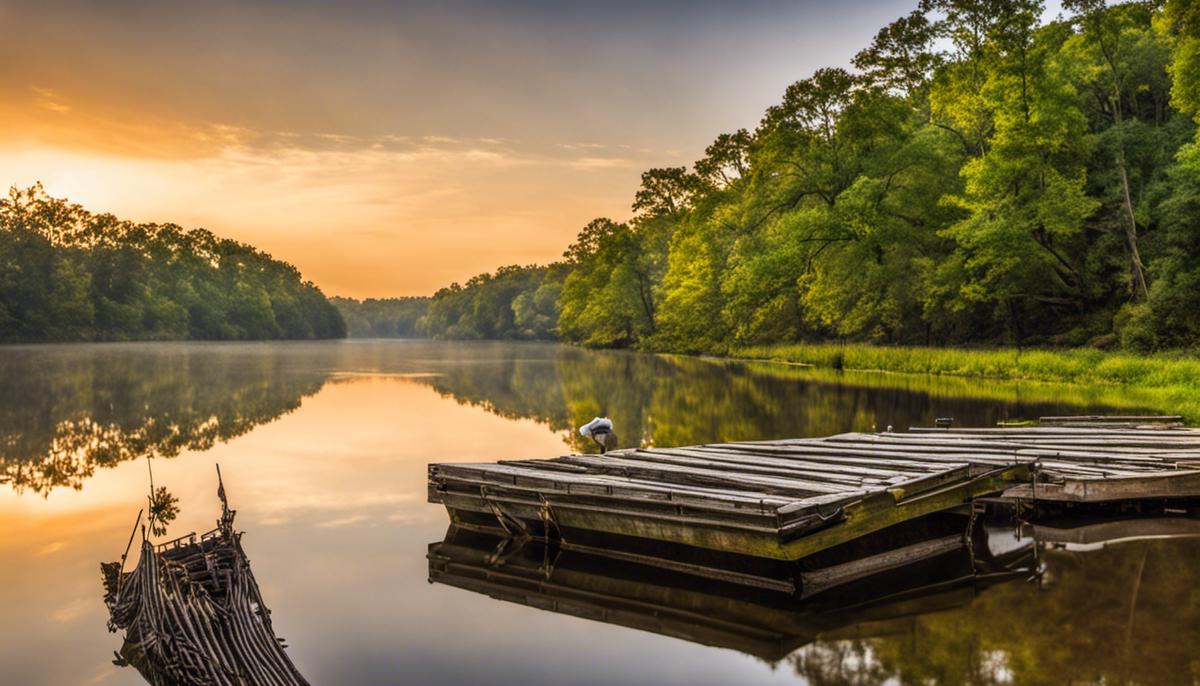
Economic Importance of the Tallahatchie River
The Tallahatchie River: The Engine of Local Agricultural Economies
The Tallahatchie River doesn’t just hold historical value, it also serves as a crucial driver of local economies, especially within the agriculture sector. Its vast floodplain endows the surrounding land with fertility, making those regions ideal for farming activities. Pivotal crops such as soybeans, corn, and rice are largely cultivated on farmlands situated along the river’s periphery. This optimal combination of fertile soil and accessible water resources enhances the fertility of local land, thereby underlining its importance to state and local economies.
Fisheries: A Roving Source of Income and Recreation
In addition to its impact on agriculture, the Tallahatchie River is also crucial for local and regional fisheries. Its diverse aquatic ecosystems support an array of fish species, attracting recreational anglers and supporting commercial fishing operations alike. Striped bass, perch, sunfish and several species of catfish are commonly caught. This fishing industry generates economic benefits through jobs, sales, and taxes. Further, it provides a source of food and draws tourists, bolstering the economy of the surrounding areas.
Recreation: Boosting Local Tourism
Recreational activities are another economic asset associated with the Tallahatchie River. The river is popular among local residents and visitors for activities like fishing, boating, and wildlife viewing, indirectly supporting local businesses such as retailers, restaurants, hotels, and tour operators. Paddling trails, for instance, lure canoeing and kayaking enthusiasts, thereby promoting outdoor tourism and injecting more funds into the local economy.
Industry: Promoting Business and Infrastructure
The river also supports various industries, including manufacturing and shipping. By providing an accessible waterway, it enables transportation of goods at a relatively low cost, hence fueling commerce. Moreover, it allows the operation of industries like pulp and paper mills and facilitates the production of hydroelectric power. With these, the river significantly contributes to the economic activities in the areas along its course.
Conservation Efforts: Protecting the Economic Lifeline
Recognizing the economic importance of the Tallahatchie River, several conservation efforts are underway to protect its health and vitality. These efforts include maintaining water quality, preserving habitats, and preventing over-exploitation of resources. Such initiatives ensure the sustainable economic utilization of the river, benefitting local industries, agriculture, and the recreational sector, and securing the livelihoods of residents in the long run.
The Tallahatchie River is far more than just a geographical wonder – it’s a crucial economic cornerstone for the communities located along its banks. This vital waterway consistently supports local growth and development by supplying the crucial resources necessary for a range of economic activities.
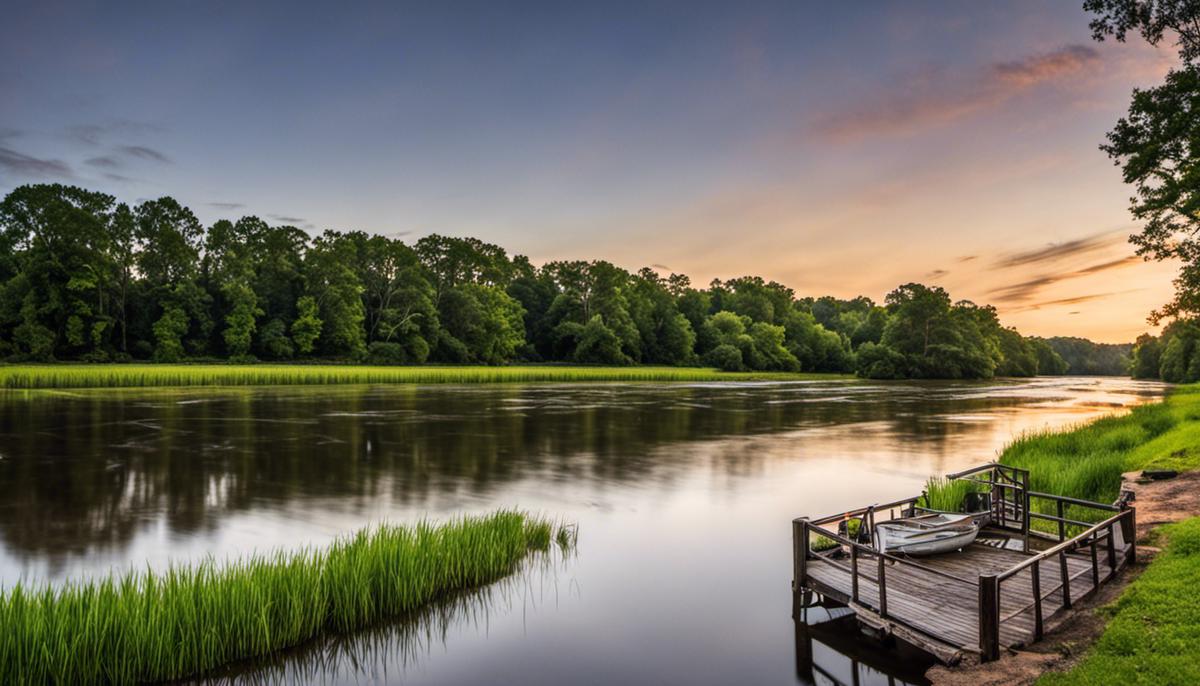
Ecological Impact and Conservation Efforts
Discover the Vibrant Ecology of the Tallahatchie River
Meandering majestically across 230 miles of the Mississippi landscape, the Tallahatchie River is home to an abundant array of native plants and wildlife. The riveting underwater world bustles with the activity of aquatic creatures like catfish and bass along with various types of turtles, all of which depend on the river for sustenance and shelter. Bird enthusiasts will delight in spotting soaring bald eagles, graceful blue herons, and a variety of other bird species that make their home here or visit during seasonal migrations. A lush cover of deciduous trees, including cottonwoods, willows, and cypress trees, embellish the riverbanks adding to the river’s scenic charm.
Environmental Threats to the Tallahatchie River
Yet, despite its natural beauty and biodiversity, the Tallahatchie River faces a variety of environmental threats. One key issue is pollution from agricultural run-off. This not only affects water quality but can also lead to the excess growth of aquatic plants and algal blooms, a condition known as eutrophication. This degrades habitats and can cause significant loss of aquatic life due to the lack of dissolved oxygen.
Deforestation and habitat loss, often due to urbanization and development projects, are other significant threats. These activities can lead to increased erosion and sedimentation in the river, degrading water quality and disrupting habitats for aquatic life.
Additionally, climate change exerts its effects on the river, causing shifts in seasonal flow patterns and can lead to more frequent and severe periods of drought or flooding, which can impact both the river’s ecology and local human communities.
Conservation Efforts for the Tallahatchie River
Recognizing these threats, numerous conservation efforts have been put in place to preserve the river. Some of these initiatives focus on mitigating the effects of agricultural pollution. This includes promoting best farming practices, such as limiting the use of fertilizers and pesticides, and implementing buffer zones around the river to reduce runoff.
There’s also a push for responsible development around the river. This involves lobbying for stricter regulations on deforestation and urbanization near the river banks, and promoting sustainable development practices which minimize environmental impact.
To address climate change impacts, local communities, scientists, and conservation groups are researching various adaptation strategies. This might include the use of drought-resistant crops, the building of infrastructure to mitigate flooding, and efforts to restore and protect river habitats that are critical for the resilience of local wildlife.
Education and community involvement are central to the success of these conservation efforts. Groups organize clean-up drives, offer educational programs, and create citizen science initiatives involving local residents in the monitoring and stewardship of the river.
Public, private, and non-profit entities are increasingly recognizing the importance of maintaining the health and biodiversity of the Tallahatchie River. Through measures designed to mitigate environmental threats, and sustained efforts to enhance its resilience against climate change, the goal is to ensure it continues to sustain a rich array of life for generations to come.
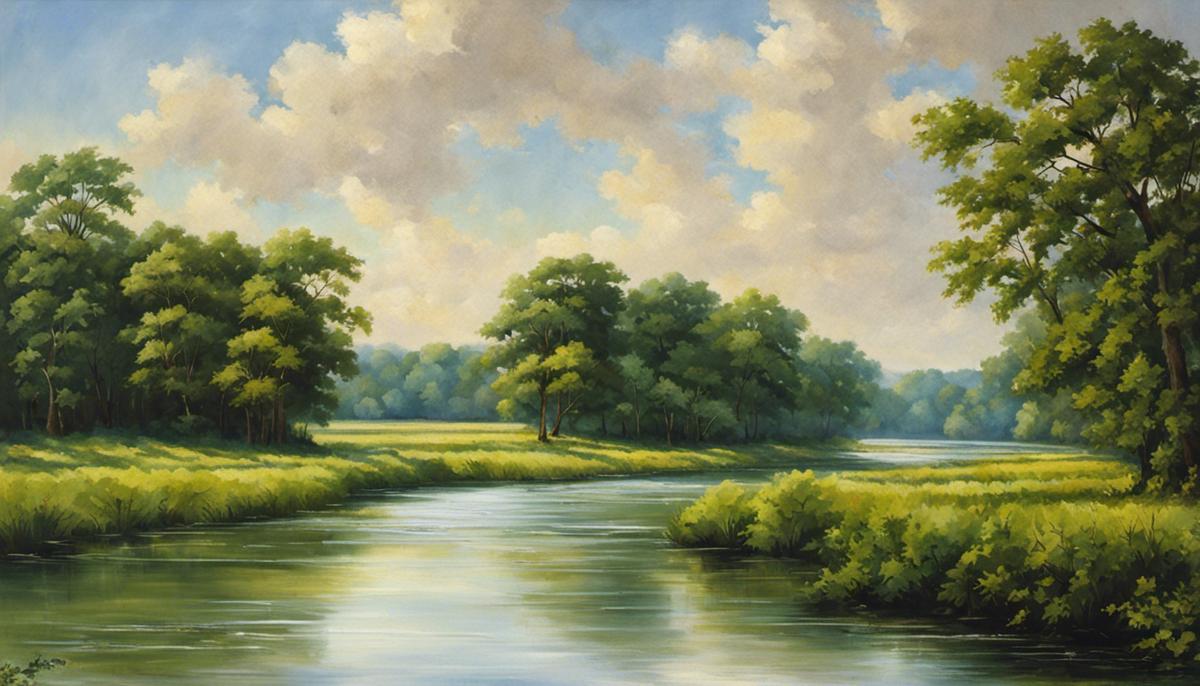
As we delve deeper into the distinct features of the Tallahatchie River, appreciation for its role in human history, economy, and ecology deepens. The river’s geographical setting, its influence on historical episodes, its vibrant contribution to the economy, and the variety of ecosystems it hosts, all constitute its unique character. Furthermore, awareness of the environmental threats the river faces and the critical need for conservation efforts for its sustainability heightens. Through understanding and acknowledging these facets, people can move a step closer towards its preservation, ensuring that the Tallahatchie River continues its journey, fostering life, and weaving human history for generations to come.
Writio: AI-driven content writer for websites. Get high-quality, customized articles in any style. This page was crafted by Writio.

